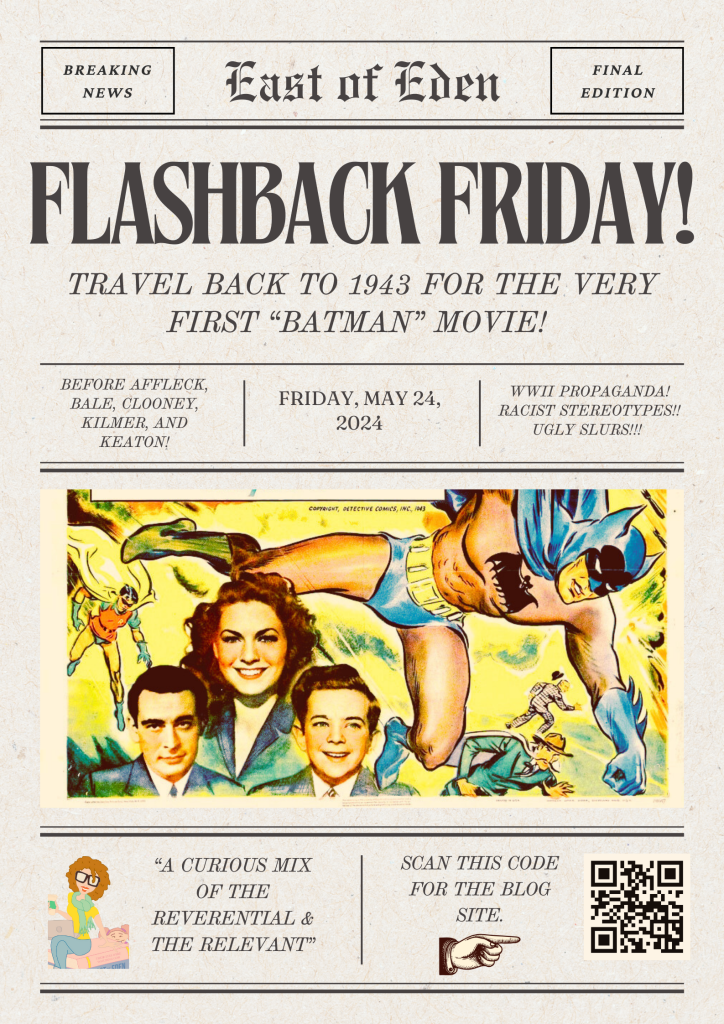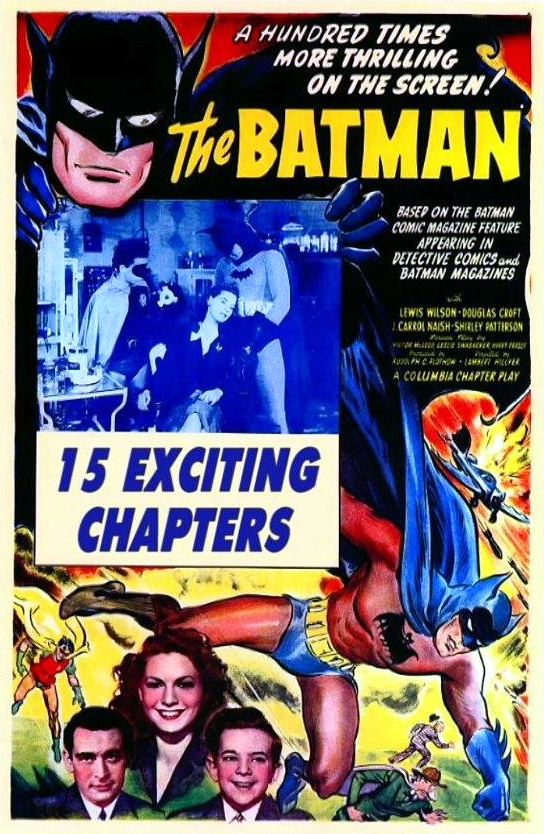Flashback Friday: Batman’s Very First Movie.

I really thought I knew all the Batman movies. I remember feeling amazed by Michael Keaton’s two turns as the Caped Crusader as an elementary school kid, and then feeling less so when Val Kilmer took the mask in 1995 (but that Seal song will always slap). As for George Clooney… well, let’s just skip that one, and move on to (my personal favorite of) Christian Bale as the Dark Knight, or Sadfleck himself, Ben Affleck. I even caught vampire turned Bat, Robert Pattinson, a couple of years ago.
But I was gobsmacked to learn that the very first Batman movie was released when President Biden was just a toddler. His first leap from the comic book pages to the silver screen happened in 1943. This inaugural cinematic outing was a 15-chapter serial that introduced audiences to the world of Gotham City and its masked vigilante.

The 1943 Batman serial was produced by Columbia Pictures, just a few years after Batman’s comic book debut in 1939. Directed by Lambert Hillyer and featuring Lewis Wilson as Batman/Bruce Wayne and Douglas Croft as Robin/Dick Grayson, the black-and-white serial provided a World War II-era interpretation of the superhero. The dynamic duo takes on the sinister Dr. Daka, a Japanese spy portrayed by J. Carrol Naish– who was of Irish descent. And here’s where things took a racist turn. Check out this video from the History of The Batman Youtube channel:
Unlike the more complex villains of later Batman films, Dr. Daka is a straightforward antagonist, embodying the era’s fears and prejudices.
Batman did manage to platform things other than xenophobia. For example, it introduced several elements that would become staples of the Batman mythos like the first on-screen appearance of the Batcave, complete with a secret entrance and scientific equipment. This foundational depiction would evolve significantly in the later films.
The serial also popularized the idea of Alfred Pennyworth as a loyal, indispensable aide. Portrayed by William Austin, Alfred was depicted with a mustache, a look that would become a defining characteristic in many later portrayals. By the way, Vulture has a pretty cool Alfred retrospective here.
Viewing this movie today offers a fascinating glimpse into the early days of superhero cinema (along with a healthy dose of wartime xenophobia). While it is rudimentary compared to the high-tech, special effects-laden films of recent decades, the serial’s place in Batman’s history is significant.
The 1943 Batman serial is a testament to the character’s enduring appeal and adaptability. This 80-year-old portrayal of Batman helped shape the trajectory of one of the most beloved superheroes of all time. It offers a unique, historical perspective on the evolution of a character who continues to captivate and inspire audiences globally.
